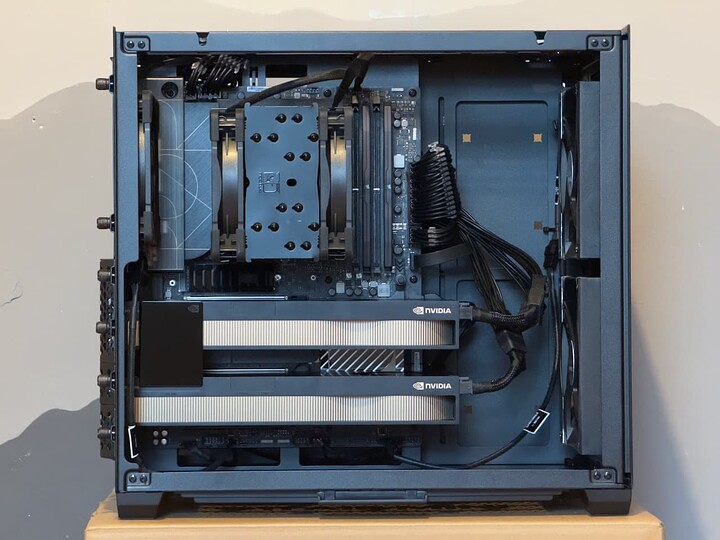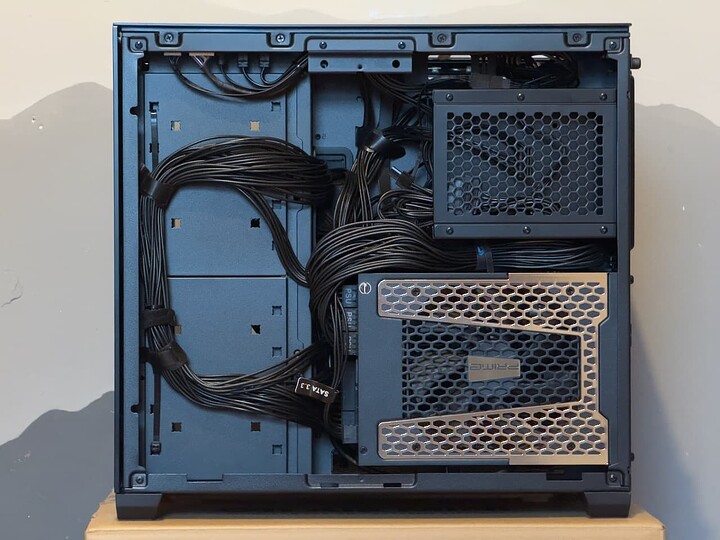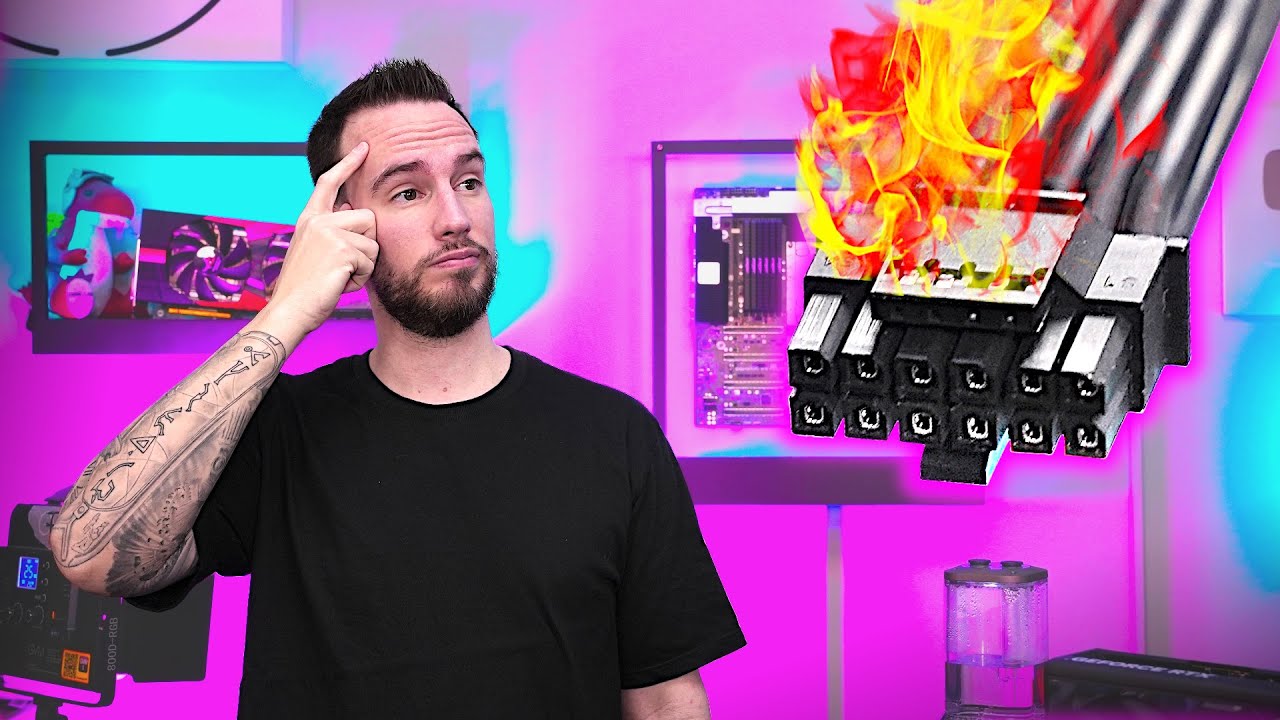Hi
I’ve just finished building a dual RTX A6000 workstation that is working well, and now into some build finishing and wondering about the best power cabling to the GPUs.
Build is:
Asus Pro Art z790 motherboard with i7-13700k
Seasonic Prime PX-1600 ATX 3.0
PNY RTX A6000 x2
Lian Li 02 air mini case
I had some initial problems with one of the GPUs, the supplied dual PCIe to 8 pin CPU adapter (nvidia p/n 030-1233-000) was faulty, only outputting 12V on 3 of the 4 12V pins. Was very odd and a pain to debug as continuity and resistance testing with a multimeter showed all wiring in the adapter was correct, and identical with the other GPUs working adapter. The supplier was quick to get a replacement and the build is now working fine.
I would like to tidy the build up a bit, and reduce the number of connectors, by switching to 8 pin CPU/EPS cables direct from the PSU without the nvidia adapters. The Seasonic PSU, GPUs and cable specs supports this, and I’ve tested it works using a modified 4+4 CPU connector. Will mean custom cables from Cablemod or similar.
Apart from aesthetics and extra costs, are there any advantages/disadvantages or technical considerations?
I don’t know what I don’t know, so it might be obvious to you folks, but I’d appreciate your expertise. Leave it alone it works is a good answer.
Thanks.
2 Likes
You can pretty much just do what you feel like doing.  2 EPS or even 2 VGA connectors on the PSU should be able to feed one card.
2 EPS or even 2 VGA connectors on the PSU should be able to feed one card.
My newest computer that came from a well-known SI uses 2xVGA → 1x12VHPWR cables to the 4090s from a Super Flower PSU, even though the “official” way of doing this would be 4xVGA → 1x12VHPWR.
Probably worth watching for some insight:
Hi, thanks for your reply. Good to know.
I watched Romans video recently, it’s amazing how a design can be so wrong!
I went back and rewatched this video after your suggestion, thinking about my own question rather than the 12VHPWR issue.
Makes sense about EPS/CPU supply now.
Very roughly with a single EPS/CPU cable/connector:
(4 pins x 12V x 6.4A cable rating *1) x 2 approx factor of safety = 614W max
So plenty power availalable to the GPU safely without risk of cable/connector overheating. Which was what was really bothering me.
*1 - need to know actual cable diameter and number strands, just using value from video for this rough calc
Thanks again.
Yeah that’s why I recommended the video; railing against the connector is kind of whatever, but he shares some interesting facts.
Take this with a grain of salt, but one roundabout way of checking the quality of your cables and the connectors is to watch your 12VHPWR voltage with HWMON64 while stressing the GPU. If it drops significantly below 12V (11.8 is said to be bad) you should check everything. Note that you only care about the 12VHPWR number.
Grain of salt because this is from a friend of mine who lost a 4090 to a bad L connector and dug into the topic.
Also, I gotta ask: not one, but TWO RTX 6000s and… a gamer CPU? No Xeon? No ECC? Or better yet, no Threadripper?
1 Like
Thanks for the extra help.
lol I wanted a xeon, but i was already stretching my budget with the GPUs and had some relatively new parts, such as the CPU and memory, anyway. Good GPUs with plenty VRAM was my main requirement.
To be fair, the i7 is handling what I throw at it, i7s have always been solid and reliable workhorses for me, and this is my second Asus pro art motherboard which have also been solid.
If i need xeon/threadripper in the future, I specced the case and PSU to allow this. A small win compared to the rest of the upgrade cost, but I’ll take it anyway.
1 Like


